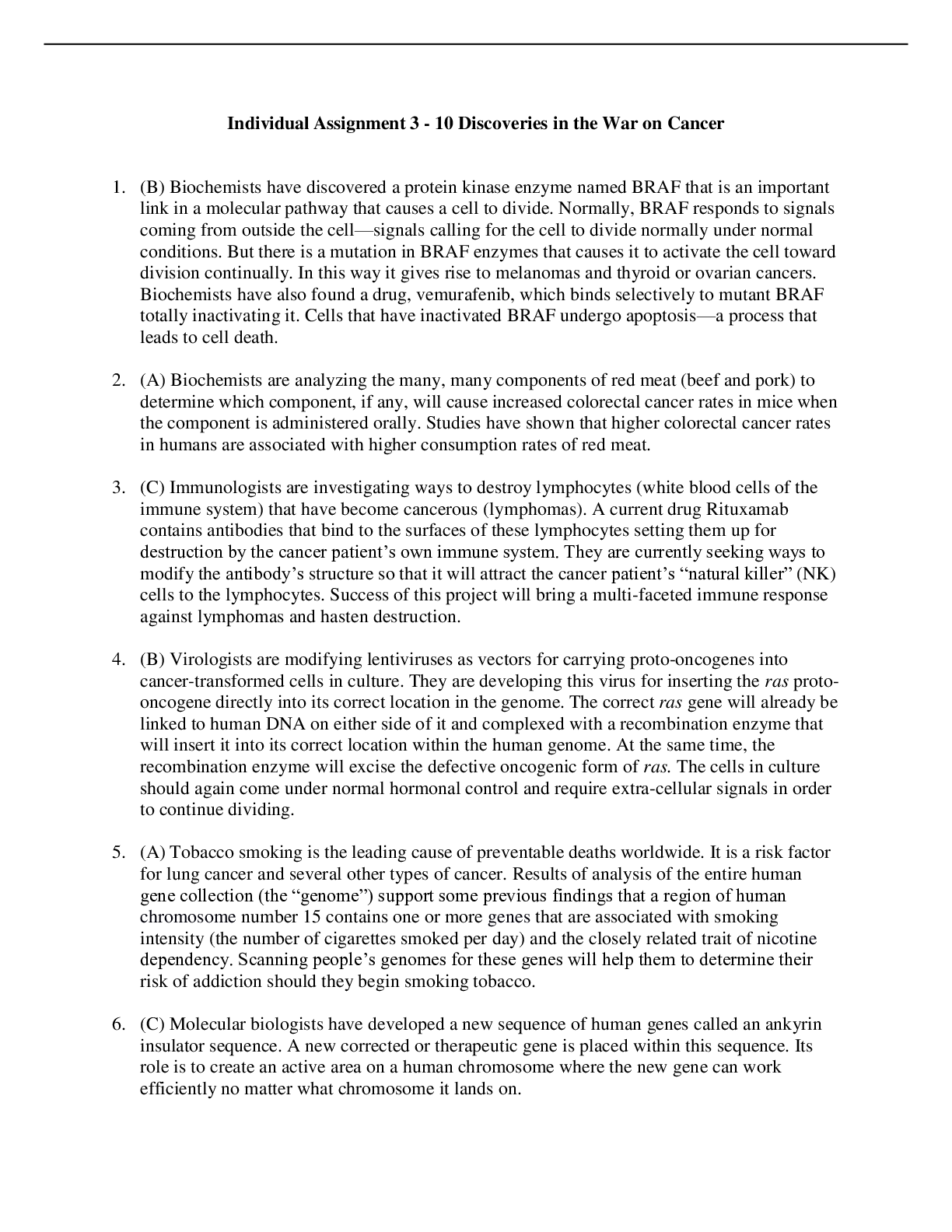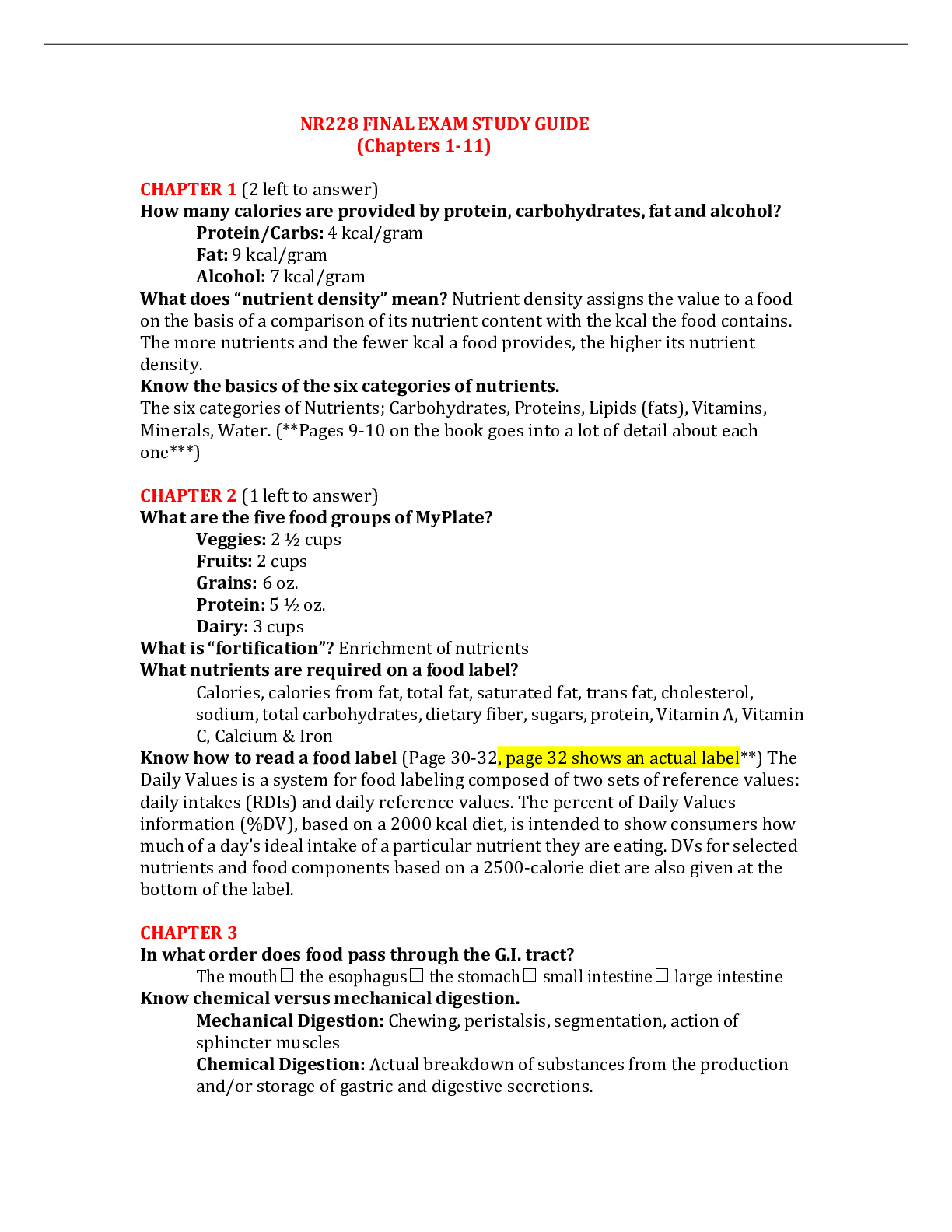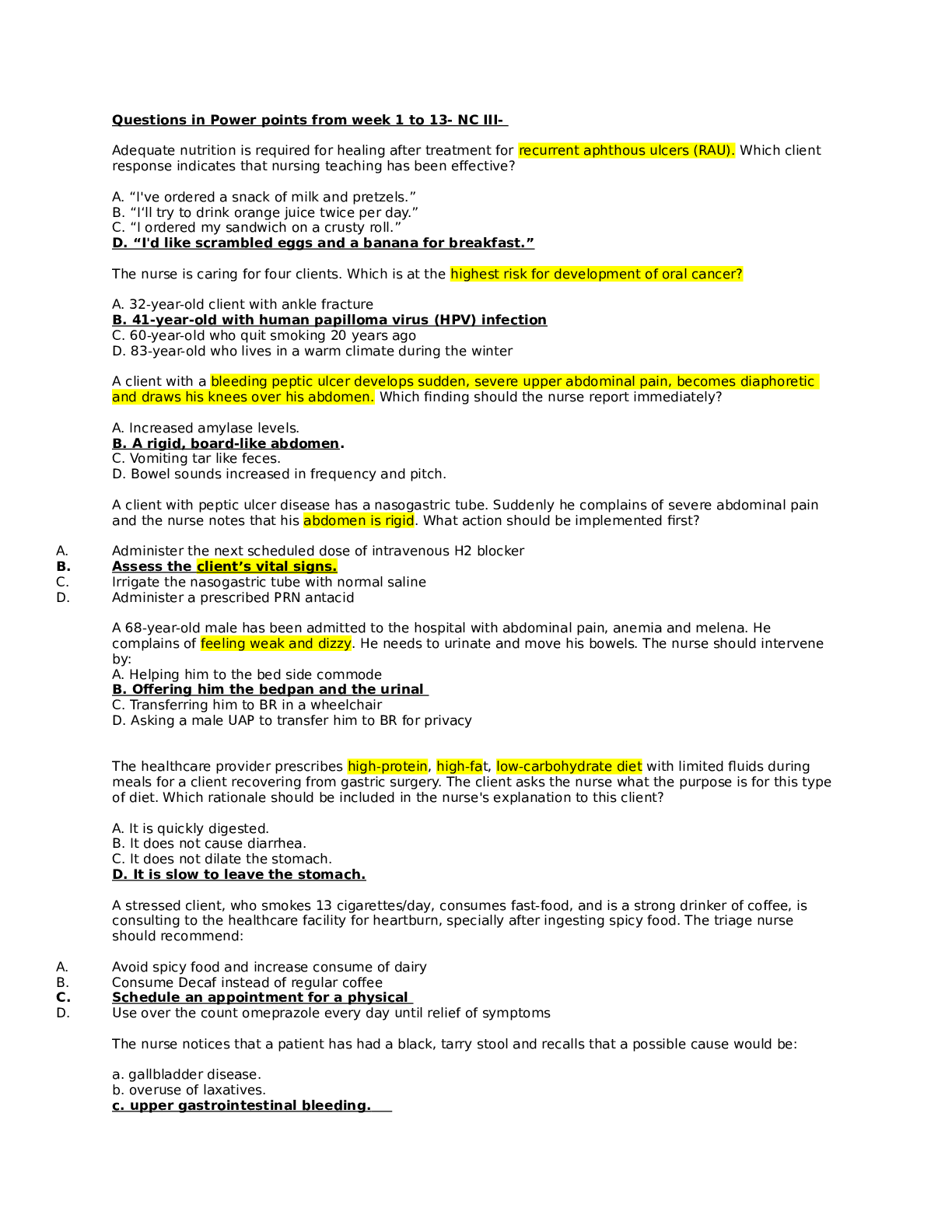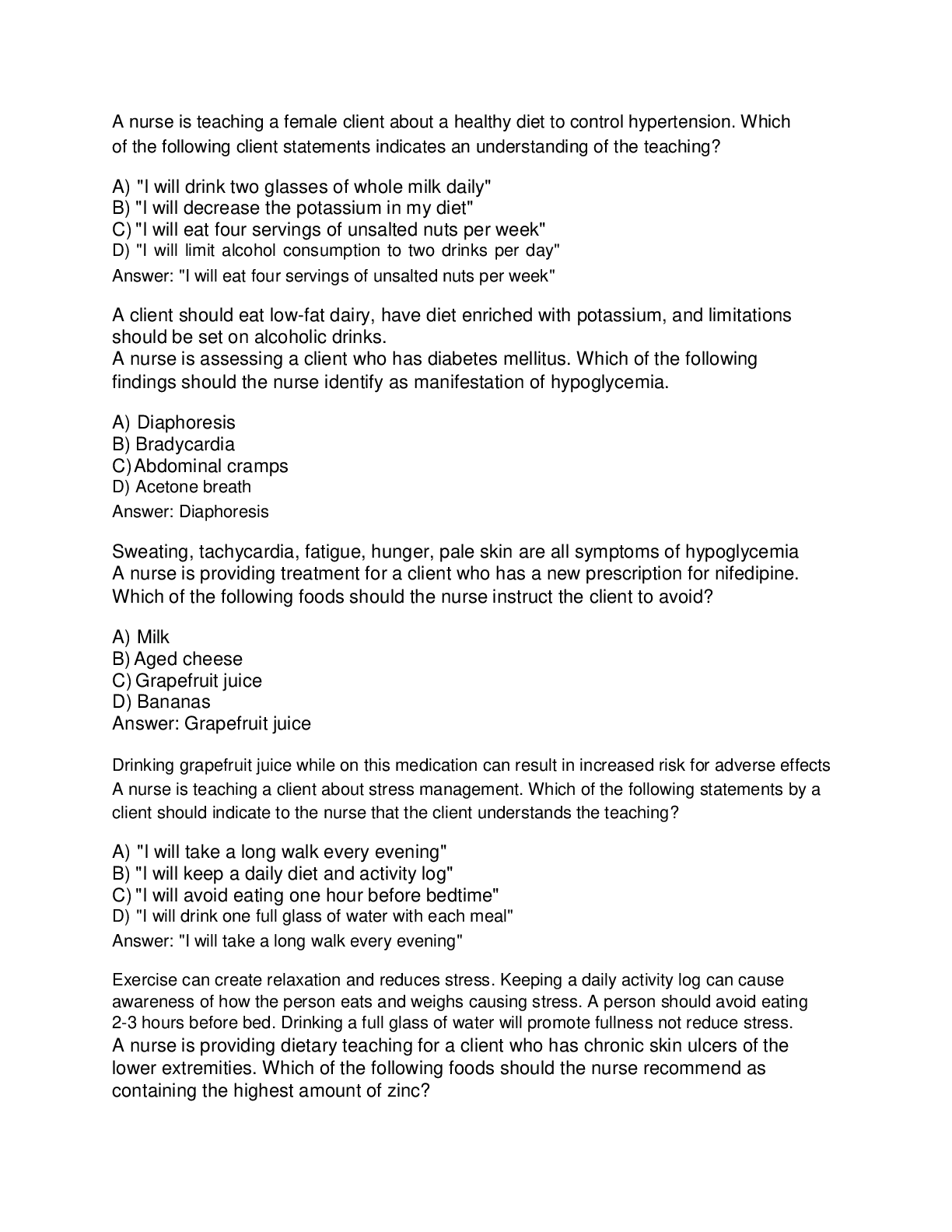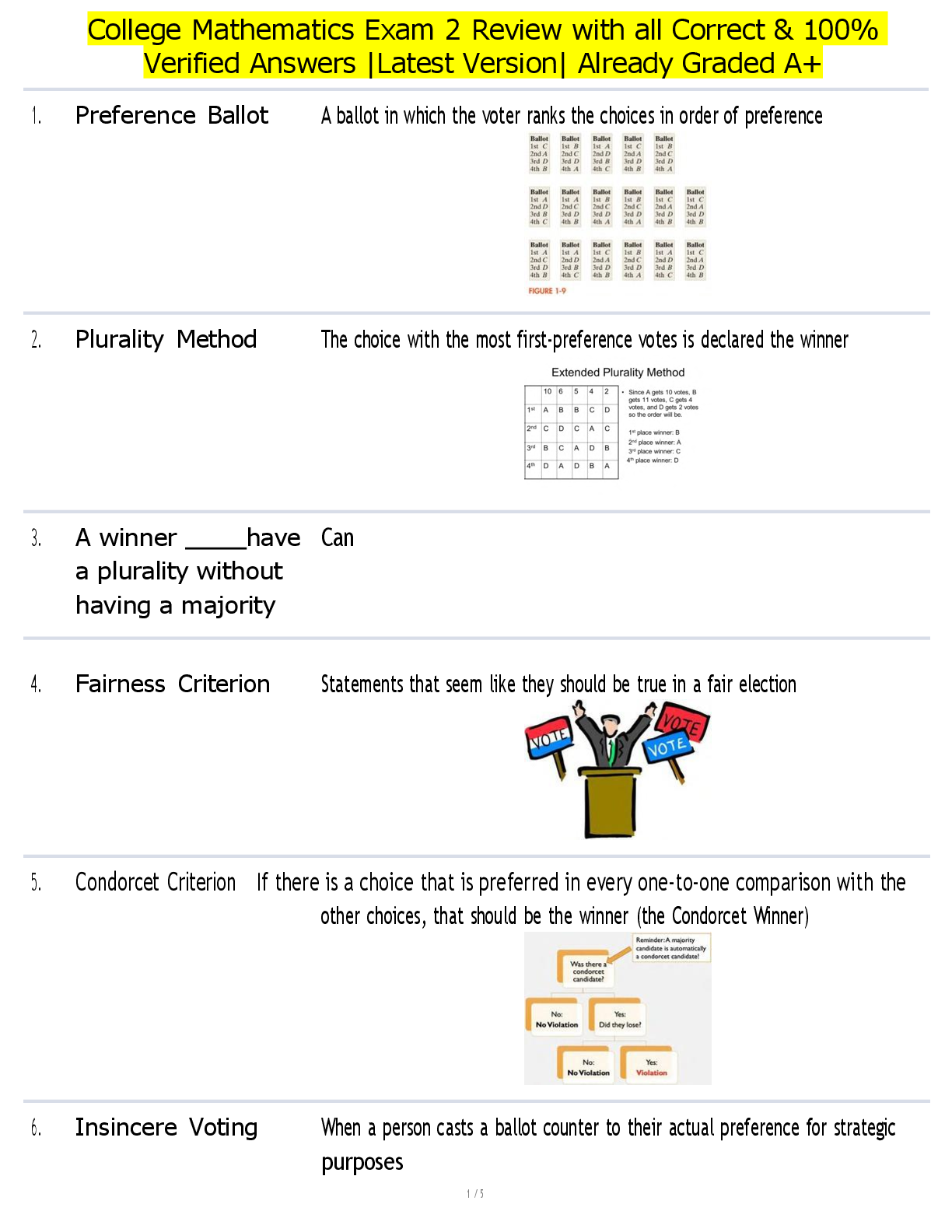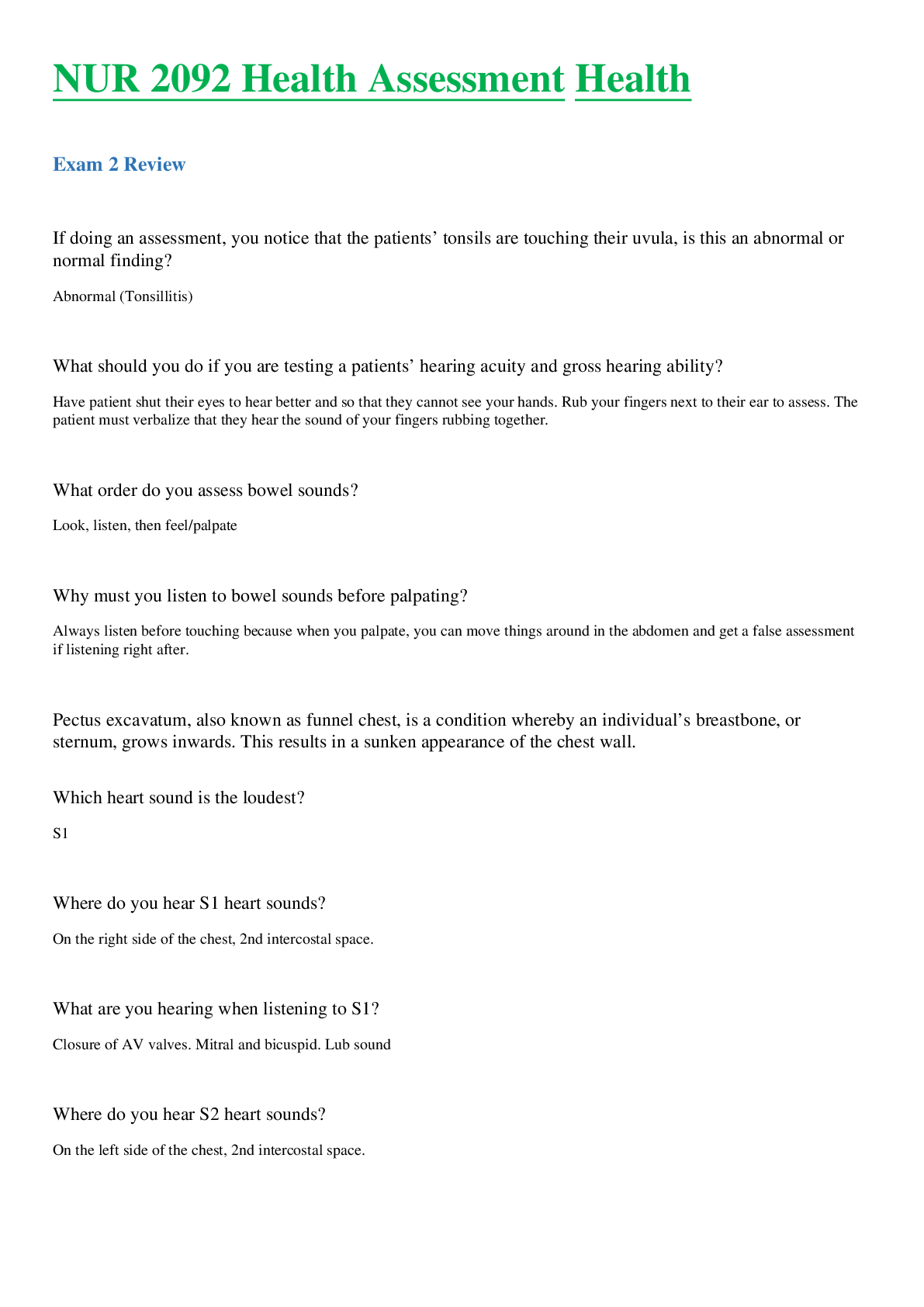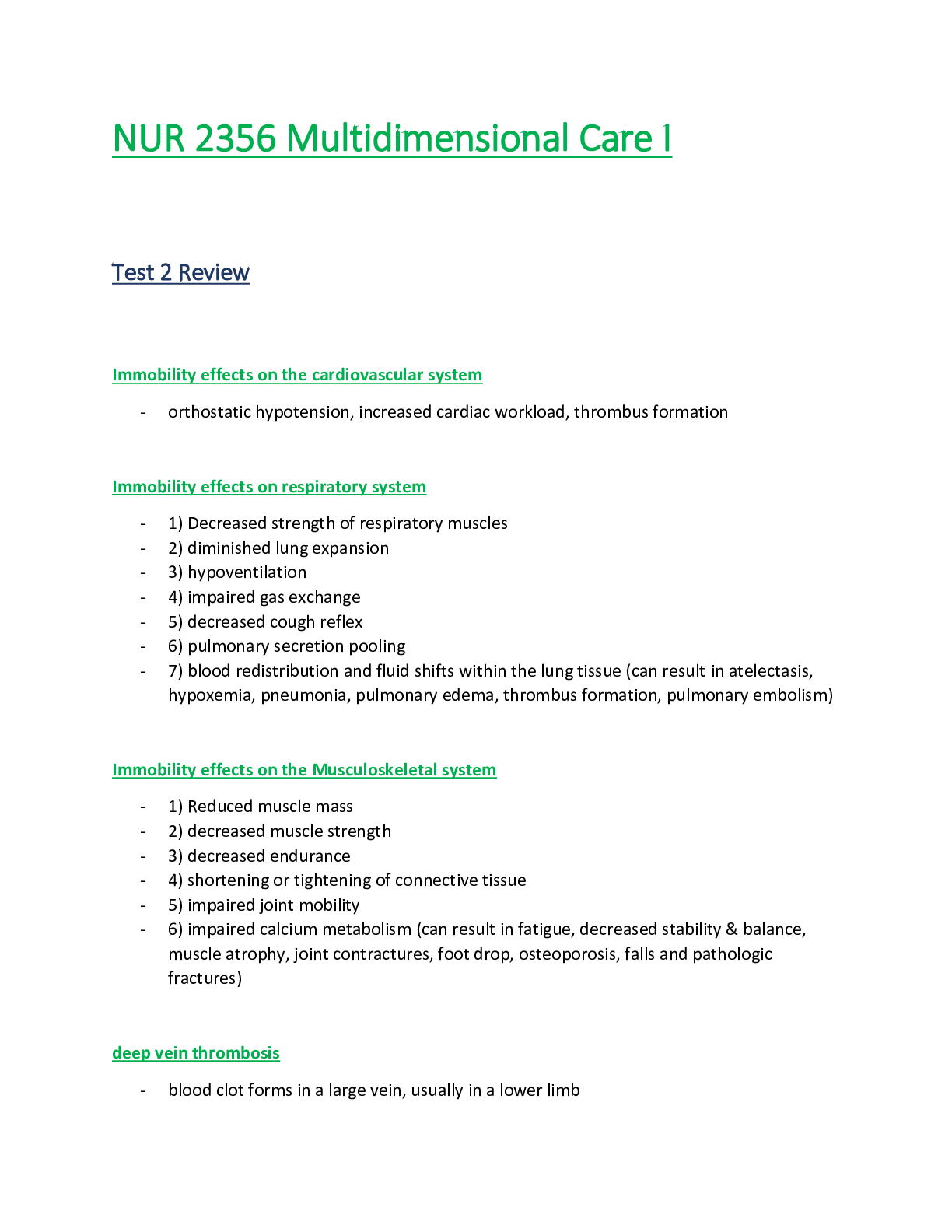Geography > EXAM REVIEW > Topographic Map Basics. ERSC ERSC 1104. Lab4-TopoMaps. Exercise 4. Section 991 (All)
Topographic Map Basics. ERSC ERSC 1104. Lab4-TopoMaps. Exercise 4. Section 991
Document Content and Description Below
Topographic Map Basics. ERSC ERSC 1104. Lab4-TopoMaps. Exercise 4. Section 991 Modified from a lab written by James S. Reichard, Georgia Southern University Student Name Charlessia Robinson Section ... 991 In this lab, you will: 1) Explore the fundamental principles of topographic maps. 2) Examine the common coordinates systems used to determine one's location on Earth's surface. 3) Learn how to use contour lines to determine the shape and slope of the land surface. 4) Learn how to calculate the slope of the land surface and stream channels from elevation data and map distance. Background Reading and Needed Supplies Background material for this exercise is provided with this lab. Additional information regarding topographic maps can be found at the following U.S. Geological Survey sites: US Topo: Maps for America US Topo Map Users Guide (PDF) https://pubs.usgs.gov/gip/TopographicMapSymbols/topomapsymbols.pdf With respect to supplies, you will need the following for this lab exercise: 1) Calculator 2) Ruler – preferably one that is graduated in tenths of inches. 3) USGS Valley Head, GA – AL, 7.5-minute topographic map (digital copy is posted to Blackboard course page). Map Representation of Topography A topographic map is a graphical means of representing Earth’s three-dimensional surface (i.e., topography) in two dimensions, such as on a piece of paper or computer screen. In order to represent the vertical dimensional on a flat map, cartographers employ what are called contour lines, which connect points of equal elevation on the land surface. Contour lines are normally measured in feet or meters above sea level. For example, imagine you were to walk around the island shown in the topographic map in Figure 4.1a, but followed the trace of a single contour line. Because the line represents a specific height above sea level, we can see from the profile or cross-sectional view (Figure 4.1b) that you would neither gain nor lose elevation as you walked. It should be clear that contour lines can never cross, since this would imply that a point could simultaneously be at two different elevations, which is impossible. Another important feature of a topographic map is its contour interval, which is simply the difference in elevation between adjacent contour lines. In Figure 4.1 the contour interval is 20 feet. Based on this interval, we can determine that the top of the island must lie somewhere between 120 feet above sea level and the next contour line, which is the missing 140-foot line. A reasonable estimate then is that the top of the island is around 130 feet, as this is the midpoint of the interval. [Show More]
Last updated: 3 years ago
Preview 1 out of 13 pages

Buy this document to get the full access instantly
Instant Download Access after purchase
Buy NowInstant download
We Accept:

Reviews( 0 )
$12.00
Can't find what you want? Try our AI powered Search
Document information
Connected school, study & course
About the document
Uploaded On
Apr 22, 2021
Number of pages
13
Written in
All
Additional information
This document has been written for:
Uploaded
Apr 22, 2021
Downloads
0
Views
275

